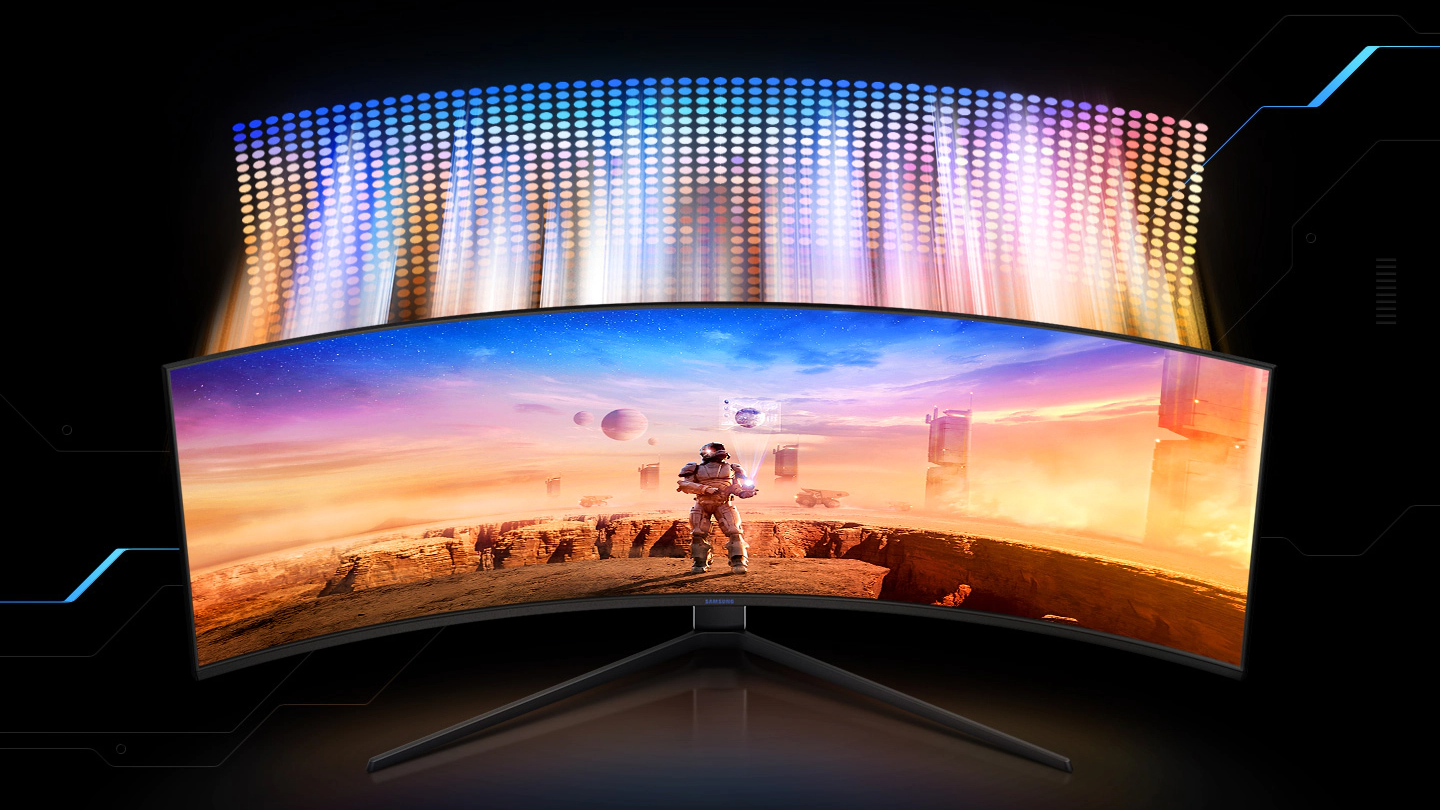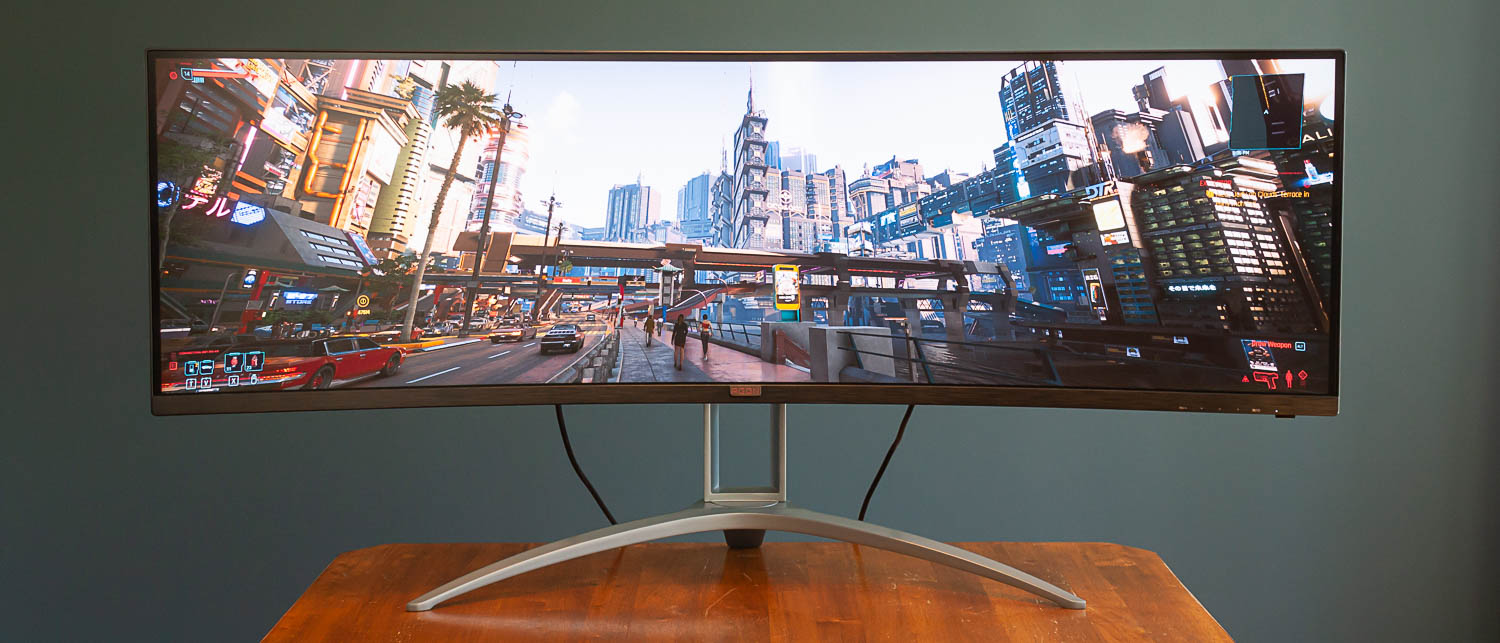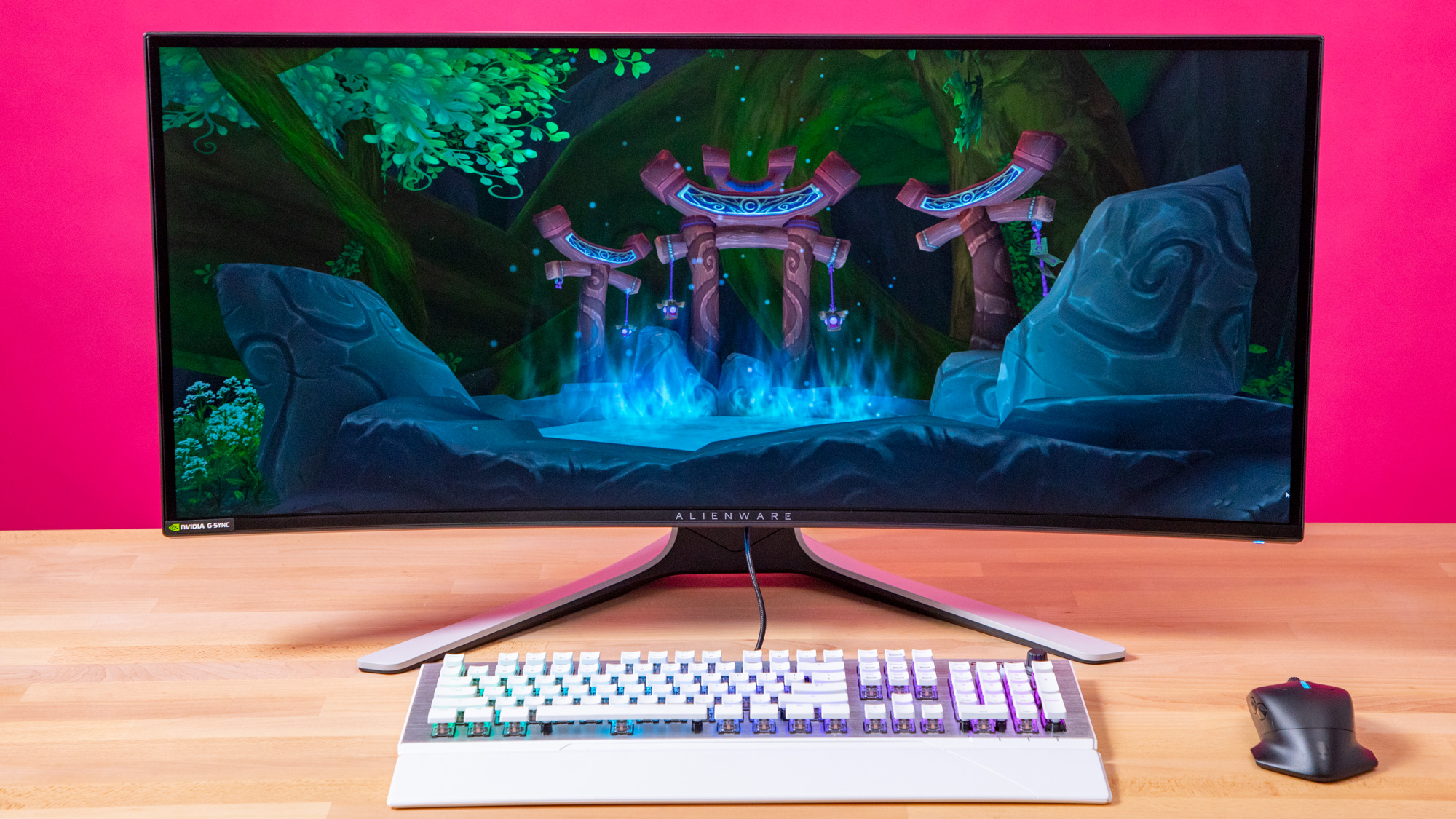Is an ultrawide monitor actually worth it?
Why should you opt for a longer screen?

When you're setting out to buy one of the best gaming monitors, there are literally hundreds of different options out there. All kinds of sizes, resolutions, display technologies and even aspect ratios are available for you to project the best PC games onto.
And one of the most novel types of monitors that have been getting more and more popular recently is the ultrawide monitor. These displays are way more immersive, and can even boost productivity when you're getting some work done. But are they actually worth your time, money and space?
What is an ultrawide monitor?
When it comes to monitors, the most common aspect ratio is 16:9, which is a common widescreen aspect ratio, which is also what most TVs offer these days. This is in contrast to the way things were in the early 2000s and 1990s, when most monitors were 4:3, and everything was a bit more square shaped.
However, there are more and more displays available these days that have a 21:9 aspect ratio that is far wider than what a 16:9 monitor offers. Instead of a 1,920 x 1,080 display at this ratio, you would instead get a 2,560 x 1080, which gives you way more horizontal space.
But even more recently we've seen these displays expanding even further outward, with some, like the Samsung Odyssey Neo G9 offering a mind-blowing 32:9 aspect ratio, or a resolution of 5,120 x 1,440. These super-ultra-wide monitors will truly take up your entire field of vision.

So what's the downside of an ultrawide monitor?
That all sounds pretty awesome, to be sure, but it's not all sunshine and roses for ultrawide monitors. There are a lot of factors that might make some folks think twice before putting one of these giant monitors on their desk – and yes, size is a big one.
You'll be hard-pressed to find an ultrawide monitor that is less than 34 inches, and even when they're curved (and a lot of them are) they can take up a lot of horizontal space on your desk, which could be an issue if you don't have a lot of space. For instance, the ultrawide monitor we use every day at home, the AOC Agon AG352UCG6 Black Edition measures nearly 34 inches long horizontally. This is largely thanks to that display's large bezels, but it's something to keep in mind if you have a smaller desk.
Get daily insight, inspiration and deals in your inbox
Sign up for breaking news, reviews, opinion, top tech deals, and more.
They're also a lot harder to actually power. If you're looking at getting a 1440p monitor, an monitor at that resolution is going to require a bit more graphics horsepower to run it. After all, a 3,440 x 1,440 display has 34% more pixels than its 16:9 2,560 x 1,440 counterpart. You're pretty close to 4K at that resolution, so you're going to want a powerful graphics card to power it.
And if you're buying the monitor to primarily play your favorite PC game, you might want to check to make sure the games you want to play actually support ultrawide resolutions. While ultrawide support is getting better every day, there are still a ton of popular games that will leave you with giant black bars on either side of the screen.
Overwatch, Paladins and even Psychonauts 2 are all games that stick to a rigid 16:9 aspect ratio in-game. A lot of competitive games will block this wider aspect ratio because the developers (or the community) feel like it can give an unfair competitive advantage. And even with non-competitive games, sometimes ultrawide support is something that the developer hasn't thought to implement.

Ultrawide monitors are still worth it though
Just because there are a lot of things you have to consider before you decide to pick up an ultrawide monitor, it doesn't mean that they're not worth it. Far from it.
In fact, we're constantly annoyed that we have to keep a boring old 16:9 monitor around for benchmarking, because in pretty much all cases, we would much rather use an ultrawide monitor for everything. And it's because the best ultrawide monitors are great for everything – from playing games to getting some work done.
This is especially true if you play a lot of RPGs, where having more screen real estate for UI elements like action bars and health bars can really benefit you. In Final Fantasy XIV, which lets you completely rearrange every element of its UI, we love using an ultrawide monitor, because it gives us a much larger canvas to work with without obscuring our view of what's happening on the screen.
The old days of MMO players having all the action hidden behind an impenetrable mess of UI elements is over and even more so with an ultrawide monitor.
But it's not just fun and games, either. Using an ultrawide monitor for work is a dream come true. In a lot of ways, having an ultrawide display is just like having two normal monitors glued together, and if you do rely on multiple monitors to get your work done, these displays can actually save you space. You only have to worry about one stand, and you don't have any empty space between the two displays.
And let's be honest, most of us aren't using our PCs for just one thing these days. Our machines are serving as a game console, a work machine, or a way to watch Netflix depending on the time of day, especially as we continue to work from home. With how many things an ultrawide display excels at, it's not surprising that so many people are flocking to these monitors, and we definitely recommend that you try one out for yourself to see what all the hype is about.
- Here are the best processors
Jackie Thomas is the Hardware and Buying Guides Editor at IGN. Previously, she was TechRadar's US computing editor. She is fat, queer and extremely online. Computers are the devil, but she just happens to be a satanist. If you need to know anything about computing components, PC gaming or the best laptop on the market, don't be afraid to drop her a line on Twitter or through email.
